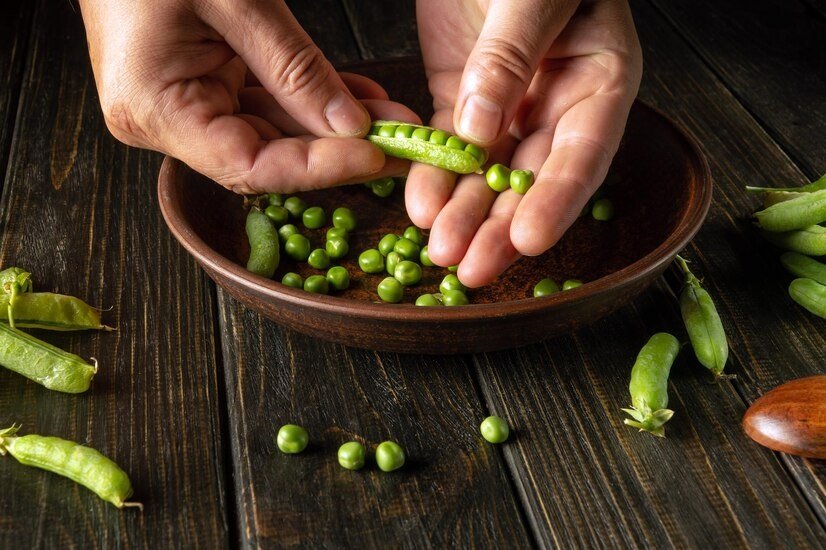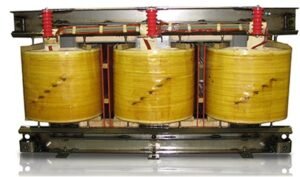Lima Beans: The Unsung Heroes of Your Diet

lima beans
Lima beans might not be the first thing that comes to mind when you think of delicious and nutritious foods, but these little legumes are packed with benefits that make them worth a spot on your plate. Whether you’re a seasoned cook or a beginner in the kitchen, lima beans offer a versatile and nutritious option that can enhance your meals and improve your health. Let’s dive into the world of lima beans and discover why they’re a must-have in your diet.
What Are Lima Beans?
Lima beans, also known as butter beans due to their rich, buttery texture, are a type of legume that belongs to the Fabaceae family. Originating from Central and South America, these beans have been cultivated for thousands of years and are named after Lima, the capital of Peru. They come in various sizes and colors, with the most common being the large, pale green or white beans.
Nutritional Profile
Lima beans are a powerhouse of nutrition. They are low in fat and high in protein, making them an excellent addition to vegetarian and vegan diets. Here’s a quick look at what you get from a cup of cooked lima- beans:
- Calories: Around 200
- Protein: 11 grams
- Fiber: 9 grams
- Carbohydrates: 39 grams
- Fat: Less than 1 gram
- Iron: 25% of the daily recommended intake
- Magnesium: 20% of the daily recommended intake
- Folate: 40% of the daily recommended intake
Lima- beans also contain significant amounts of potassium, zinc, and vitamin B6, making them a well-rounded choice for a healthy diet.
Health Benefits
1. Heart Health
Lima beans are rich in dietary fiber, which is known to help reduce cholesterol levels. Lowering cholesterol can decrease the risk of heart disease and stroke. The potassium content in lima beans also helps regulate blood pressure, contributing to overall cardiovascular health.
2. Digestive Health
The high fiber content in lima beans aids in digestion by promoting regular bowel movements and preventing constipation. This helps maintain a healthy digestive system and can prevent conditions like irritable bowel syndrome (IBS).
3. Blood Sugar Control
For those managing diabetes or blood sugar levels, lima beans can be particularly beneficial. The complex carbohydrates in lima-beans are digested slowly, leading to a gradual release of glucose into the bloodstream and preventing sudden spikes in blood sugar levels.
4. Weight Management
Lima beans are low in fat and high in protein and fiber, which helps you feel full longer. This can reduce overall calorie intake and assist in weight management. They are also a great source of plant-based protein, which is essential for muscle maintenance and growth.
5. Antioxidant Properties
Lima beans contain antioxidants, which help combat free radicals in the body. Free radicals can cause cellular damage and contribute to aging and diseases. Including lima -beans in your diet can help protect your cells and support overall health.
How to Cook Lima Beans
Cooking lima beans can be a simple and rewarding process. Here’s a basic method to get you started:
1. Soaking
If you’re using dried lima- beans, start by soaking them. This helps reduce cooking time and improves digestibility. Soak the beans in water overnight or for at least 8 hours.
2. Cooking
Drain the soaked beans and rinse them thoroughly. Place them in a large pot and cover with fresh water. Bring to a boil, then reduce the heat and simmer for about 45 minutes to an hour, or until the beans are tender. You can add salt and seasonings towards the end of the cooking process.
3. Canned Lima Beans
If you’re short on time, canned lima beans are a convenient option. Simply drain and rinse the beans to remove excess sodium and they’re ready to use in your recipes.
Lima Beans in Different Cuisines
Lima beans are a versatile ingredient that can be found in various cuisines around the world. Here are a few examples:
1. Southern United States
In the Southern United States, lima -beans are often cooked with ham hocks or bacon, creating a rich and flavorful dish known as succotash. This dish combines lima- beans with corn, creating a hearty and satisfying meal.
2. Mediterranean
Mediterranean cuisine incorporates lima beans into stews and salads. A popular dish is the Greek “gigantes plaki,” which features large lima -beans baked in a tomato sauce with herbs and spices.
3. Latin America
In Latin American cuisine, lima- beans are used in a variety of ways. They are often found in soups and stews, such as the Peruvian dish “locro,” a hearty stew made with lima -beans, potatoes, and cheese.
Lima Beans Recipes
1. Lima Bean Soup
A warm, comforting soup made with lima beans, vegetables, and herbs.
Ingredients:
- 1 cup dried lima -beans
- 1 onion, chopped
- 2 carrots, chopped
- 2 celery stalks, chopped
- 2 garlic cloves, minced
- 4 cups vegetable broth
- Salt and pepper to taste
- Fresh parsley for garnish
Instructions:
- Soak and cook the lima- beans as described above.
- In a large pot, sauté the onion, carrots, celery, and garlic until softened.
- Add the cooked lima- beans and vegetable broth.
- Simmer for 30 minutes, seasoning with salt and pepper.
- Garnish with fresh parsley before serving.
2. Lima Bean Salad
A refreshing salad perfect for a light lunch or side dish.
Ingredients:
- 1 can of lima beans, drained and rinsed
- 1 red bell pepper, chopped
- 1 cucumber, chopped
- 1 small red onion, thinly sliced
- 1/4 cup fresh cilantro, chopped
- Juice of 1 lemon
- 2 tablespoons olive oil
- Salt and pepper to taste
Instructions:
- In a large bowl, combine the lima- beans, bell pepper, cucumber, red onion, and cilantro.
- In a small bowl, whisk together the lemon juice, olive oil, salt, and pepper.
- Pour the dressing over the salad and toss to combine.
Lima Beans vs. Other Beans
Lima beans stand out from other beans in several ways. They have a distinct, buttery flavor and a creamy texture that sets them apart. Nutritionally, lima -beans are similar to other beans, offering a good source of protein, fiber, and essential nutrients. However, they tend to have higher levels of certain minerals, such as iron and magnesium.
Buying and Storing Lima -Beans
1. Fresh
Fresh lima -beans can be found in the produce section of some grocery stores or farmers’ markets. Look for pods that are firm and free from blemishes.
2. Dried
Dried lima beans are available in most grocery stores. Store them in an airtight container in a cool, dry place, and they can last for up to a year.
3. Canned
Canned lima -beans are a convenient option for quick meals. Store unopened cans in a cool, dry place. Once opened, transfer the beans to a sealed container and refrigerate for up to a week.
Common Myths About Lima Beans
**1. Myth: Lima -beans are toxic.
Fact: While lima beans do contain small amounts of cyanogenic glycosides, which can release cyanide, the levels are not harmful when the beans are properly cooked.
**2. Myth: Lima -beans are hard to digest.
Fact: Soaking and thoroughly cooking lima beans can help reduce their gas-producing compounds, making them easier to digest.
**3. Myth: Lima-beans are bland.
Fact: Lima- beans have a rich, buttery flavor that can be enhanced with various seasonings and cooking methods.
Lima Beans for Kids
Lima beans can be a nutritious addition to your child’s diet. Their mild flavor and creamy texture make them appealing to many children. You can incorporate them into soups, stews, or purees. For younger kids, you might try mashing the beans and mixing them with a favorite vegetable or sauce.
Growing Your Own Lima-Beans
Growing lima -beans in your garden can be a rewarding experience. They require a sunny spot and well-drained soil. Here’s a basic guide to get you started:
1. Planting
Plant lima bean seeds about 1 inch deep and 6 inches apart. Water them well and keep the soil moist until they germinate.
2. Care
Lima beans need regular watering, especially during dry spells. They also benefit from a trellis or support, as they can grow quite tall.
3. Harvesting
Harvest the beans when the pods are plump and the seeds inside are fully formed. Fresh lima- beans can be eaten immediately or dried for later use.
Environmental Impact
Lima beans are a sustainable crop that can benefit the environment. They improve soil health by fixing nitrogen, which reduces the need for chemical fertilizers. Additionally, they have a relatively low water footprint compared to other crops, making them an eco-friendly choice for conscientious consumers.
Frequently Asked Questions (FAQs)
1. Are lima -beans good for weight loss?
Yes, lima beans are low in fat and high in protein and fiber, which can help you feel full longer and reduce overall calorie intake.
2. Can lima beans be eaten raw?
No, raw lima beans contain compounds that can be toxic. Always cook lima beans thoroughly before eating.
3. Are lima beans suitable for a vegetarian diet?
Absolutely. Lima beans are a great source of plant-based protein and essential nutrients, making them ideal for vegetarians and vegans.
4. How can I make lima beans more flavorful?
You can enhance the flavor of lima -beans by cooking them with herbs, spices, garlic, onions, or incorporating them into dishes like soups and stews.
5. Are lima -beans good for heart health?
Yes, lima -beans are high in fiber, which can help lower cholesterol levels and reduce the risk of heart disease.
Conclusion
Lima beans are a versatile, nutritious, and delicious addition to any diet. Whether you’re looking to improve your heart health, manage your weight, or simply enjoy a tasty meal, lima -beans offer a wealth of benefits. By incorporating lima beans into your meals, you can enjoy their rich, buttery flavor while reaping the numerous health benefits they provide. So, next time you’re at the grocery store, don’t overlook these humble beans – they might just become your new favorite ingredient!
Read More: What Does Matcha Taste Like?






